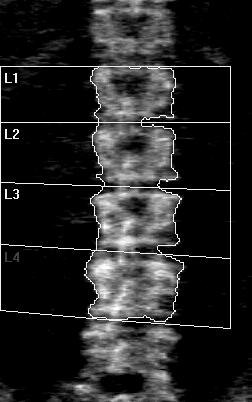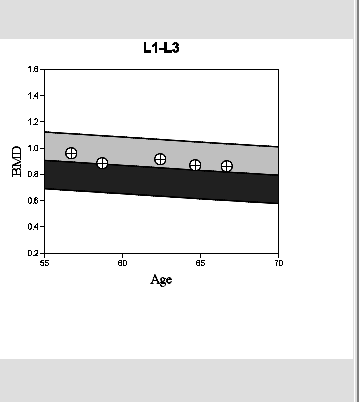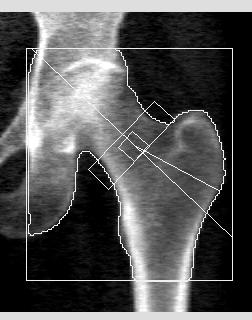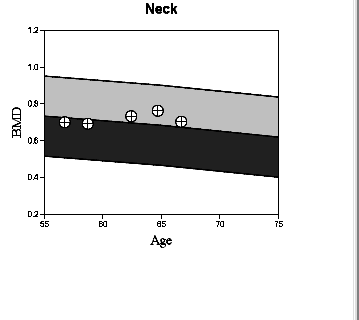Evaluation of low bone mass: A directed clinical and
laboratory evaluation is suggested for all patients with
osteoporosis, patients initiating therapy for osteoporosis prevention
or treatment, patients with an unexplained decline in bone mineral
density or a decline in bone mineral density despite pharmacological
treatment, and patients whose bone mineral density is below expected
range for age (Z-score < -2.0).
Considerations for Treatment: Bone density is a major but not
the only determinant of a patient's fracture risk. A prior history of
a low trauma fracture is consistent with a clinical diagnosis of
osteoporosis and should be treated as such. The final decision
regarding initiation of pharmacological therapy, choice of therapy
and duration of treatment should be made by the treating clinician
and should take into consideration the presence or development of
risk factors known to increase bone loss and fracture risk.
FRAX(tm), the World Health Organization's 10-year absolute
fracture risk estimate, may be used to guide treatment decisions for
postmenopausal women and men >age 50 with osteopenia (T-score
between -1.0 and -2.5) who have never experienced a fragility
fracture of the hip or spine and have not taken a bisphosphonate for
the past 2 years and/or a non-bisphosphonate osteoporosis therapy for
at least 1 year. For patients to whom the FRAX(tm) calculation
applies, the National Osteoporosis Foundation recommends
consideration of pharmacological therapy when the 10-year absolute
hip fracture risk is >3% or the overall major osteoporotic
fracture risk is >20%. Major osteoporotic fractures include
clinical spine, hip, wrist and shoulder fractures.
All treatment decisions require clinical judgment and consideration
of individual patient factors, including patient preferences,
co-morbidities, previous drug use, and risk factors not captured in
the FRAX(tm) model (e.g., frailty, falls, vitamin D deficiency,
increased bone turnover, and interval significant decline in bone
density). For further details on the use of this tool or to change
the patient responses to the questionnaire and manually re-calculate
results go to http://www.shef.ac.uk/FRAX/
.
Interpretation of changes in bone mineral density: In general,
a stable or increased bone mineral density is
considered a positive response to therapy. A decrease in the
bone mineral density suggest the need for re-assessment of the
patient's clinical status, including compliance with therapy and the
development of conditions known to contribute to bone loss.
Guidelines for follow up bone density scans: Serial BMD scans
may be performed to monitor bone loss and to evaluate the response to
treatment. Coverage may vary according to insurance provider.
Medicare generally covers screening BMD scans no more than every 2
years. The interval for follow-up BMD scans requires clinical
judgment and consideration of individual patient factors such as new
fractures and the development of conditions or the initiation of
medications associated with bone loss and fracture. The following
algorithm is a suggested guideline for follow up BMD scans:
- Patients on treatment: Repeat BMD 1-2 years after
initiating treatment. Once stability or an increase in BMD has been
established, approximately every 2-3 years thereafter.
- Patients stopping treatment: Repeat BMD in 1-2 years
initially and then 1-3 years thereafter, with greater frequency for
lower T-scores and/or higher fracture risk.
- Patients with low bone mass not on treatment and
with no risk factors for bone loss: Repeat BMD every 1-3 years.
- Patients with low bone mass not on treatment and
with risk factors for bone loss: Repeat BMD yearly if the patient
has risk factors for accelerated bone loss such as glucocorticoid or
hormone deprivation treatment.
|





